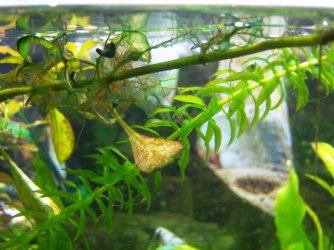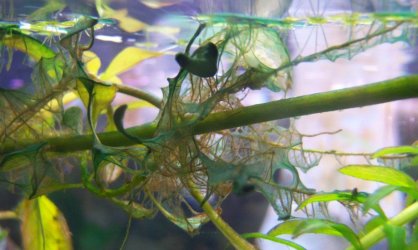hi, we recently set up our newest tank, and now have an algae problem.
i have enclosed a pic, as i'm not entirely sure what type of algae it is (assuming it is actually algae, lol!). it's dark green, kinda slimy looking.
any ideas on what kind of algae?
we have 2 small bristlenose plecs in the tank, cos we had diatoms not long after the fish were put in, and the plecs cleaned the tank up nicely.
now a couple of weeks later, we've got this stuff on the plants. it's been there a few days now. we tested the water the day after it appeared, ammonia - 0, nitrites - 0.3 and nitrates - 20. ph is at 7, that's all my test kit tests. we did a partial water change a couple of days later (a couple of days ago).
the plants have grown so much since setup, granted not all will stay in place, but they're growing well!!
any tips for getting rid of it?
i have enclosed a pic, as i'm not entirely sure what type of algae it is (assuming it is actually algae, lol!). it's dark green, kinda slimy looking.
any ideas on what kind of algae?
we have 2 small bristlenose plecs in the tank, cos we had diatoms not long after the fish were put in, and the plecs cleaned the tank up nicely.

now a couple of weeks later, we've got this stuff on the plants. it's been there a few days now. we tested the water the day after it appeared, ammonia - 0, nitrites - 0.3 and nitrates - 20. ph is at 7, that's all my test kit tests. we did a partial water change a couple of days later (a couple of days ago).
the plants have grown so much since setup, granted not all will stay in place, but they're growing well!!
any tips for getting rid of it?




 /www.pubmedcentral.nih.gov/articlere...gi?artid=252138
/www.pubmedcentral.nih.gov/articlere...gi?artid=252138